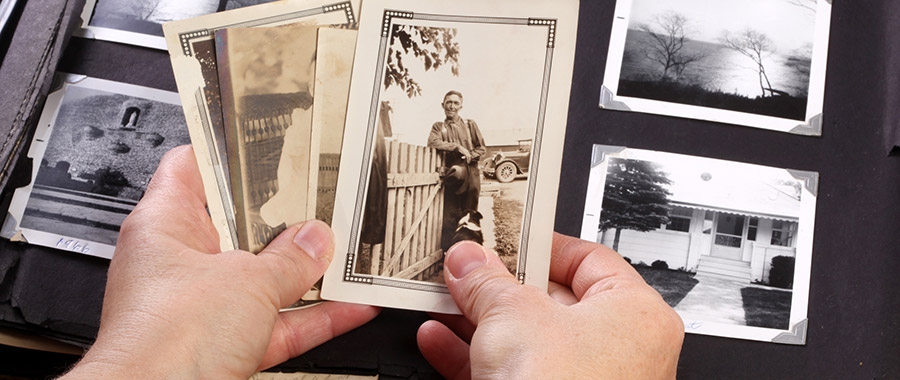The views expressed in our content reflect individual perspectives and do not represent the authoritative views of the Baha'i Faith.
Do you know who your ancestors were? Tracing our genealogy—looking back in time at our ancestral histories—has become a major societal trend.
With the advent of widely available genetic testing and a profusion of websites that help you track down your ancestral roots, it seems like many, many people want to understand and know more about their origins.
Of course, everyone has some curiosity about where they came from, but we now have scientific tools that allow us to do more than just rely on the family stories our grandparents pass down to us.
Those proven scientific and genetic tools point out a salient but little-known genealogical fact: all humans alive today, no matter where they’re from, share a surprisingly recent common ancestor, perhaps within the last 5,000 years.
That fact means everyone on Earth today can trace their family tree back to one person who lived during the time of the initial emergence of recorded human history.
We truly are all one family—the progeny, as the Baha’i teachings put it, of primordial humanity:
The principles of the oneness of the world of humanity must be proclaimed, understood and put into practice, so that all the nations and religions may again remember the long-forgotten fact – that they are all the progeny of primordial humanity, Adam, and the denizens of one land. Are they not breathing one air? Is not the same sun shining upon all? – Abdu’l-Baha, Divine Philosophy, pp. 177-178.
Of course, humans have lived for much longer than five thousand years, so how can we know with such certainty who our ancestors were? For clarification, let’s look at the science.
Geneticists agree that modern humans probably began somewhere between 163,900 and 260,200 years ago in eastern Africa, on the banks of the Omo River, in the area we call Ethiopia today. During that approximate, give-or-take-a-few-thousand-years period, one of the first modern men evolved, who scientists now call “Y-chromosomal Adam.”
Our earliest female ancestor, termed “Mitochondrial Eve” or “African Eve”—the first modern woman—probably also emerged in that same region around that time, or perhaps a little later.
So who were these first people? Well, scientists have determined that Y-chromosomal Adam was the most recent common ancestor (abbreviated as MRCA) that all currently-existing male human Y chromosomes came from. Every man alive on Earth today has Y-chromosomal Adam as his ultimate human grandfather.
Similarly, mitochondrial Eve was humanity’s most recent common maternal ancestor, or MRCA. That one African woman’s mitochondrial DNA exists in every mother and grandmother for the last 200,000 or so years, all the way back until every line on everybody’s genealogical chart converges on just one woman. We are all her descendents.
But these two people didn’t necessarily live during the same time period, or even know each other. Mitochondrial Eve had other female contemporaries—perhaps thousands of other early human females—but for reasons we don’t fully understand yet, only her DNA produced that direct, unbroken genetic line of women to everyone now living. She must’ve been a genetically strong woman.
So Y-chromosomal Adam and Mitochondrial Eve both existed during that prehistoric period a few hundred thousand years ago when anatomically-modern human beings—known as Homo sapiens sapiens, which means “the doubly-wise man” in Latin—developed as a population distinct from other genus Homo sub-species.
Okay, what about the 5000-year ancestor thing?
In September of 2004, the journal Nature published a study from a Yale mathematician showing that the most recent person who was a direct ancestor of all humans currently alive may have lived just a few thousand years ago.
“While we may not all be ’brothers,’ the models suggest we are all hundredth cousins or so,” said Joseph T. Chang, professor in the Department of Statistics at Yale University and senior author of the Nature research paper.
Professor Chang’s model—which tracks the lives, movements, and reproduction of all people who lived within the last 20,000 years—incorporates factors such as socially driven mating, physical barriers of geography and migration, and recorded historical events such as wars, famines and epidemics. Although such complexities make pure mathematical analysis difficult, it was possible to integrate them into an elaborate computer simulation model. The computer repeatedly simulated history under varying assumptions,
These realistic models estimate that the most recent common ancestor (MRCA) of mankind lived as recently as about 3,000 years ago, and the “identical ancestors” point was as recent as several thousand years ago. The paper says:
No matter the languages we speak or the color of our skin, we share ancestors who planted rice on the banks of the Yangtze, who first domesticated horses on the steppes of the Ukraine, who hunted giant sloths in the forests of North and South America, and who labored to build the Great Pyramid of Khufu.
Perhaps the researchers now discovering these fantastic facts have also studied the Baha’i teachings:
Baha’u’llah taught the Oneness of humanity; that is to say, all the children of men are under the mercy of the Great God. They are the sons of one God; they are trained by God. He has placed the crown of humanity on the head of every one of the servants of God. Therefore all nations and peoples must consider themselves brethren. They are all descendants from Adam. They are the branches, leaves, flowers and fruits of One Tree. – Abdu’l-Baha, Abdu’l-Baha in London, p. 28.
















Comments
Sign in or create an account
Continue with Googleor